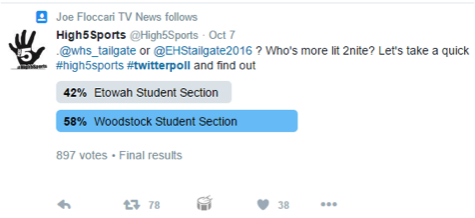6 Ways to Source Compelling Content for Your Blog and Social Pages

The glaringly absent element in most brands' content is consistency of appearance, tone and delivery of value. Unless your brand is consistent, your audience won't map those characteristics or values to your brand, or recognize you by them.
In today's scenario with 55 million status updates on Facebook, 5oo million Tweets and 18,500 posts published on LinkedIn every day, the competition for social users' attention is fierce. Being recognized and standing out is essential to your social media marketing success. By consistently sourcing compelling content for your blog and social pages, you can reinforce your relationship with your audience. The following are six ways to discover great content.

1. Embed explanatory videos/tweets/posts/blog posts that supplement to your content in the body of your blog posts
When writing a post you may want to link out to resources that can add value to your content, but you should consider embedding that content instead. Embedding adds the content visually to your blog post, making its appearance more appealing. It also helps you keep your visitors on your page instead of directing them elsewhere. If you intend to add a video to your blog don't link out to it, embed it instead. The maker of the video still gets the view or share in his counter, and you get to keep the audience you work hard to attract. Tweets/blog posts can also be embedded into a post for convenience when making a reference. Make sure to embed a blog post only when it makes sense - if you're using it as an example for writing or structure or in its entirety. Avoid using it to make a quote reference, in which case linking out would make more sense.
Examples make you content so much richer, they add variety to your content format and illustrate to your audience what you really mean. Curate embedded examples wherever you can, but don't go overboard because it may effect your page loading speed.
2. Mine reports by research organizations and blog posts by industry leaders for data and case studies
There's is no better way to substantiate a point than with data and actual instances of your claim in action. However, the best attribute of this type of content is its potential for repackaging. While anyone can search for and put together case studies related to a topic, not everyone can add value to it with their comprehension. Locate case studies that matter to you, study them, derive the best insights that your audience can benefit from and present your opinions to your blog subscribers and social followers as posts.
You could even curate insights from a group of experts in your niche.

To source research and data relevant to your niche, you could:
1) Set keyword alerts on a social listening tool like Mention
2) Set themes or add RSS feeds of top industry blogs to a content curation app like DrumUp, or
3) Subscribe to email newsletters from research organizations/giants in your industry.
3. Identify pertinent questions in your niche on question hubs, comments and communities to answer with your content
Why create content that no one is searching for? How do you know what people are searching for? The marketer in you may instantly say use a keyword planner or refer to keyword search volumes and trends to ascertain what people are seeking. Social media trends also help identify 'hot topics' to talk about.
But if you're part of a very technical niche whose audience members don't discuss topics in depth on social media pages, or you need to identify key questions to answer with your content, head to a question hub. Quora is a great general destination to find interesting questions. The activity on the questions and how recently it was posted are good indicators of potential. You could also refer to your blog comments section, or industry discussions on sub-Reddits, Google communities and LinkedIn groups for inspiration. You could use keyword alerts to locate questions (for instance - 'why' + 'social media marketing'). There are a host of keyword monitoring apps for you to explore. Once you know what people are asking, curate content to answer it. There are several content curation apps for you to choose from.
4. Curate customer stories, comments and relevant conversations on social to add credibility to your presence
Testimonials are rarely use to their full potential even though the are considered one of the best content marketing tactics. While most companies use testimonials on their websites, there is so much more that you can do with customer testimonials. Use a testimonial screenshot when referring to something relevant on a blog post (internal or external). You could even use it as an example for a customer service or marketing tactic that you're explaining to your audience. There are multiple ways to showcase the testimonials you collect. You could convert them into compelling ads for your social media pages.
Tools like Boast and Klout help you aggregate testimonials or recommendations from your customers.
5. Use questions/polls/social contests to involve your social audience in content creation
Five undeniable benefits of audience generated content -
1) It is affordable to create
2) It incites audience engagement
3) It drives more shares and visibility
4) It increases effectiveness and credibility
5) It makes your brand appear more humane
Audience generated content can be in one of many forms - answers to questions, opinion polls, testimonials, comments or contest submissions. To implement any of the mentioned tactics, all you have to do is decide on what to ask. There are many tools and platforms available to aid in the process of audience content collections. To ask questions you could simply use Quora or a social platform. Twitter now supports polls, and it is the easiest to create (will take you under 10 seconds).

There are apps to help with social media contests like Woobox and Wishpond.
6. Turn events, webinars and workshops that you've conducted or participated in into blog/social media content
List all the events you have been a part of and five things you learned at each and you have a powerful listicle. Curate links to videos/slides or other online resources they provided to give your audience the experience of being a part of them. If you conduct workshops on a regular basis, you could share some insights from them or highlights that your subscribers could benefit from.
The best part about events, webinars and workshops is that the content has already been created. All you have to do is lay it out on slides, or collate all the resources that they include to give your audience true value.

Use these tactics to create a strong identity for your brand on social media so your audience will identify you through the crowd. You don't have to create the content to do that by yourself, simply curate it as directed on this blog post, add your voice to it and present it on your blog and social pages.
Author bio
Disha Dinesh is a content writer at Godot Media, a leading content agency. Her interests include social media and content marketing. When she's not writing, she's on the hunt for social media trends and inspiration.

Subscribe to Our Newsletter!
Latest in Social Media










